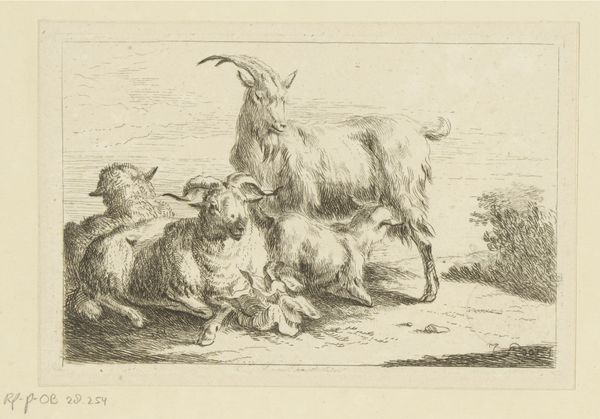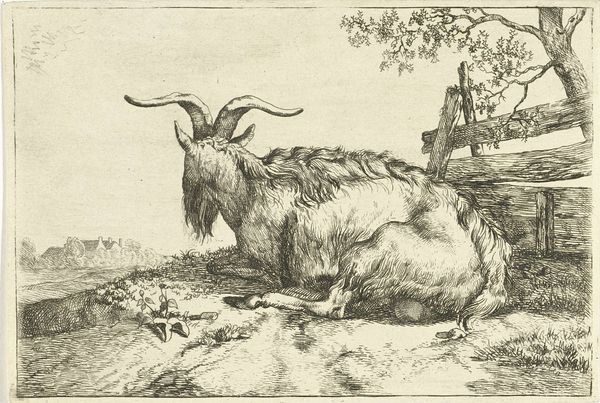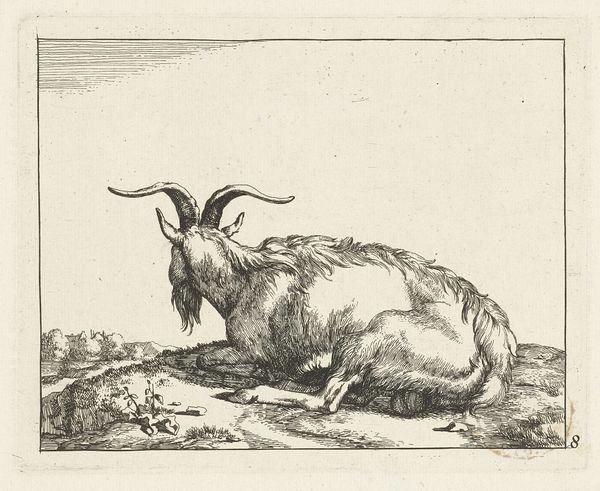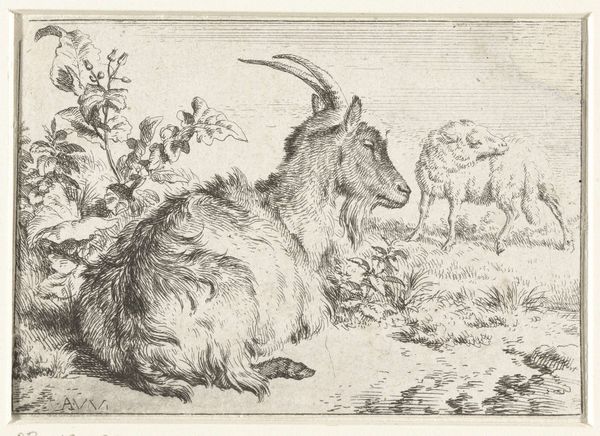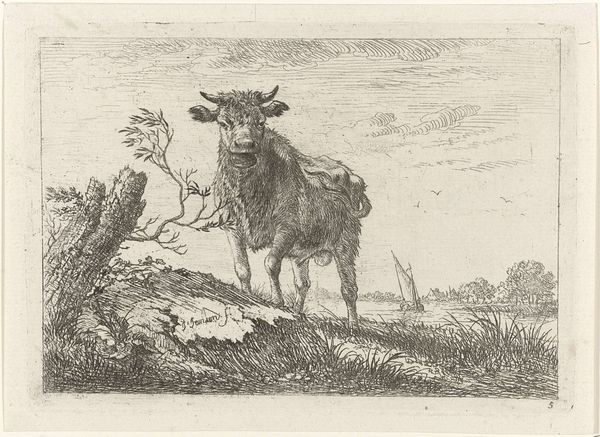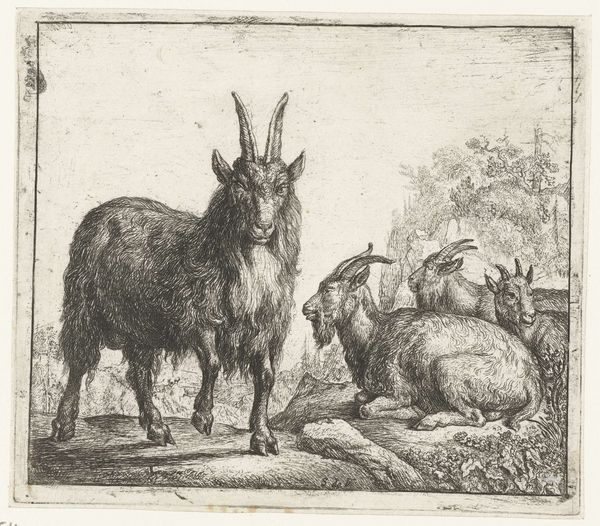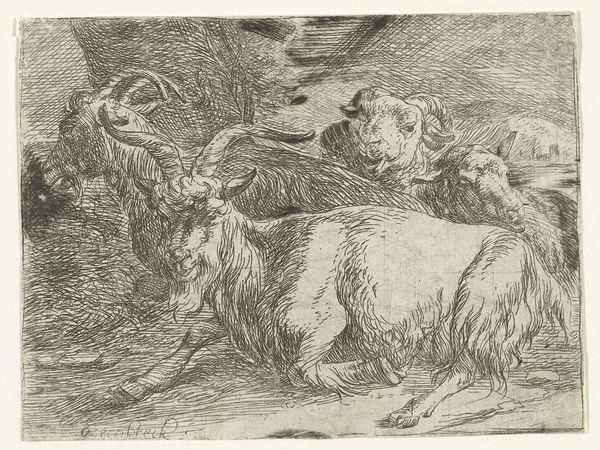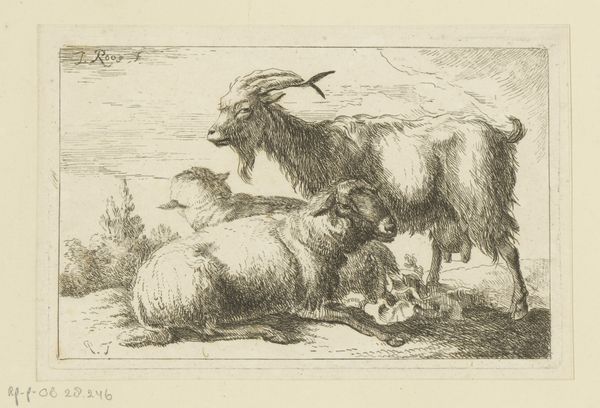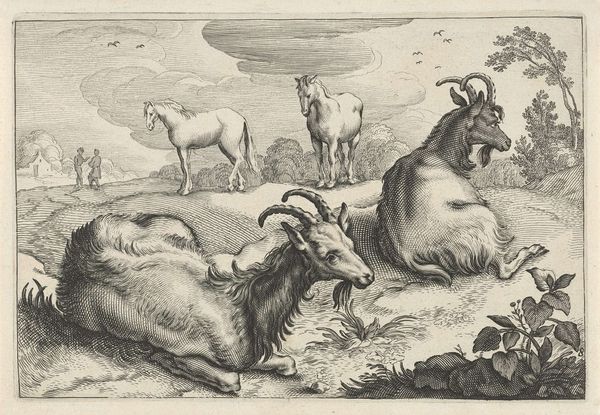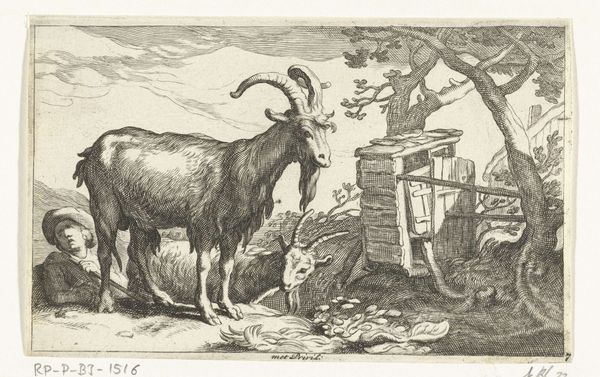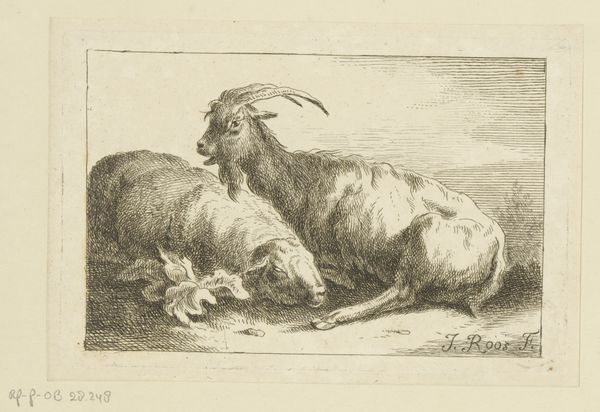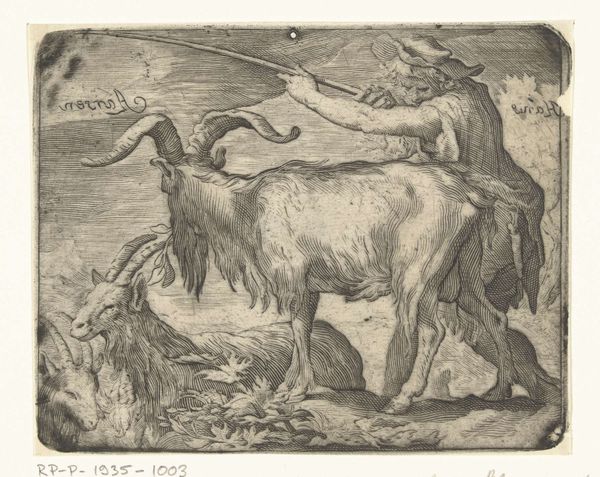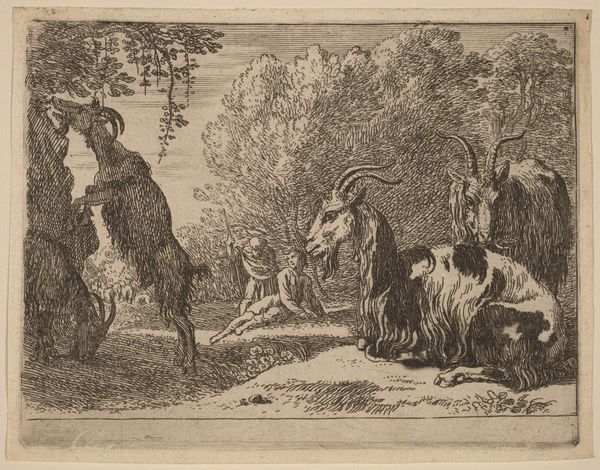
print, etching
#
baroque
# print
#
etching
#
landscape
#
figuration
#
genre-painting
#
realism
Dimensions: height 113 mm, width 143 mm
Copyright: Rijks Museum: Open Domain
Editor: Here we have “Goats and Calabash” by Boëtius Adamsz. Bolswert, created in 1611. It’s an etching printed on paper, and there’s something really striking about how the goats are positioned. They almost seem to be posing. What are your initial thoughts on this piece? Curator: It's fascinating to see these domestic scenes elevated through printmaking at this time. Before photography, prints served as crucial means of disseminating imagery. The seemingly simple subject matter—goats and a calabash—speaks to a growing interest in pastoral themes. Why do you think an artist would choose goats as a central focus in 17th century Holland? Editor: Perhaps reflecting a rural ideal in a society undergoing urbanization? It feels like it hints at the charm of country life, which townspeople are no longer immersed in. Curator: Precisely! Prints like these were not simply artistic exercises. They were commodities, reflecting a desire for particular kinds of imagery among a specific audience. Notice also how the artist has included the word ‘Bloem’ which translates to 'flower' or 'bloom', seemingly carved onto the gourd or pumpkin. Do you consider this artist adding the words as an act of vandalism, or of endorsement? Editor: Endorsement I think! The word seems purposeful, rather than defacing of nature... I wonder what political message the artist wanted to convey? Curator: Possibly. What the artist aims to convey can be elusive to historians. This brings in important questions: Who consumed these images, and what role did these seemingly quaint pastoral scenes play in shaping their worldview and relationship to the land? Were these images merely decorative, or did they contribute to a construction of Dutch identity tied to the land, even as the Netherlands became a major maritime power? Editor: This really sheds new light on how seemingly simple genre scenes were circulated. Now I understand the political dimension more fully. Curator: Indeed! Every element of this print can be used as primary material to understand broader societal patterns, tastes and values during the rise of Dutch maritime power.
Comments
No comments
Be the first to comment and join the conversation on the ultimate creative platform.
